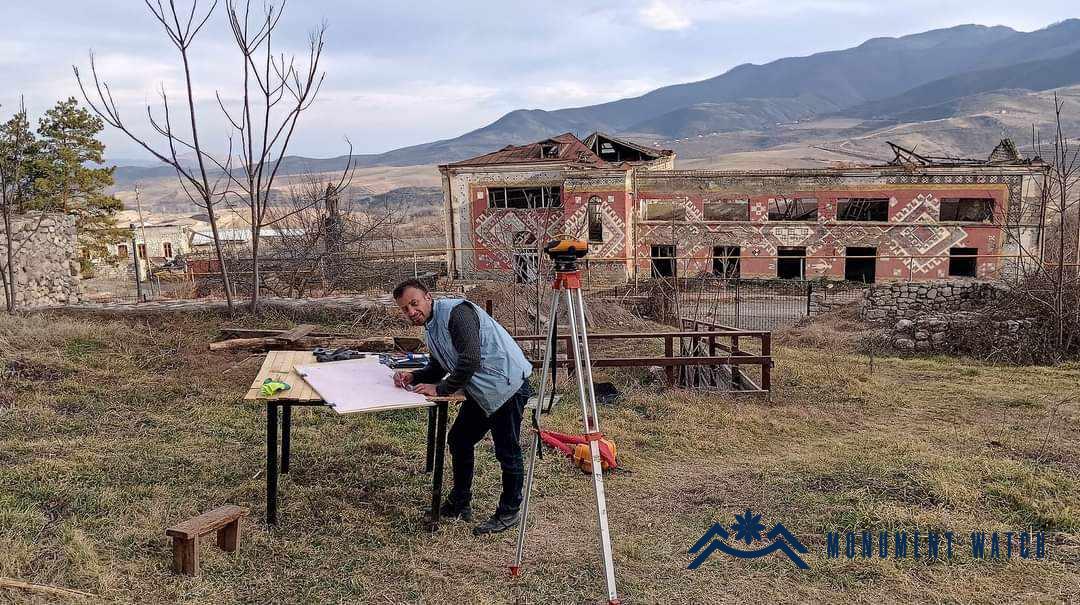
Azerbaijani Archaeologists Conduct ‘Exploratory Excavations’ in Togh Village, Occupied Artsakh
In January 2024, Azerbaijani archaeologists conducted "research excavations" in the courtyard of the Melik Palace in Togh village, located in occupied Artsakh, adjacent to the buildings. The excavation pit dug in front of the square, formed in the 20th century, is being heralded as a significant archaeological endeavor. Natig Alishov, a researcher at the Institute of Archaeology of Azerbaijan, shared photos of the monuments in Togh and its vicinity, along with images of the excavation process, in his Facebook posts. (https://www.facebook.com/photo/?fbid=7011014385600244&set=a.776647715703640).
From the photos, it is evident that Alishov visited several Armenian churches in the vicinity of Togh and Hadrut, conducting "measurements," capturing photographs and keeping track of their numbers.
Azerbaijani ICTIMAI TV produced an extensive video detailing the "excavations" conducted in the area (https://www.youtube.com/watch?v=A7ZHly0Fn5M). Alishov stated that during the research, they documented "the distortion and transformation of local limestone monuments by the Armenians." He cited the height of the "Albanian" stage, columns, crosses, and arches as evidence. The terminology used, such as "Albanian column," "Albanian monument," "arch," and the height of an "Albanian stage," is surprising. According to the archaeologist, even the tombstones around the churches bear no resemblance to the monuments. Numerous studies dedicated to these monuments establish that Armenian Christian monuments in Artsakh lack any Albanian features. The Azerbaijani archaeologist himself lacks an understanding of what "Albanian" signifies in Artsakh. He appears to merely echo statements made by the country's political leaders, obligatorily memorizing certain details along the way. However, it is surprising that someone who identifies as an archaeologist shows no familiarity with the medieval culture of Artsakh. One would expect him to cite at least one fact, rather than merely denying every assertion without substantiation. The assertions made by this archaeologist are devoid of any scientific arguments or justifications, relying solely on empty statements alleging distortion of the monuments by Armenians. Furthermore, it appears that the archaeologist in question is not even aware of the research conducted in the area, nor the published results thereof (See, https://monumentwatch.org/en/monument/the-melik-mansion-of-togh/).
It seems that the Azerbaijani archaeologist simply echoed the baseless claims of Robert Mobili, who self-proclaimed as the leader of the Udi community. Mobili asserted that he "discovered" Albanian crosses, allegedly distinct from Armenian ones (for details, see https://monumentwatch.org/en/alerts/mobili-the-inventor-decided-to-declare-the-armenian-cross-compositions-of-the-17-19th-centuries-of-occupied-hadrut-albanian/).